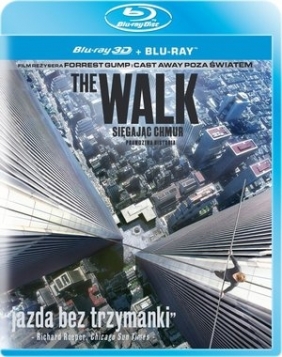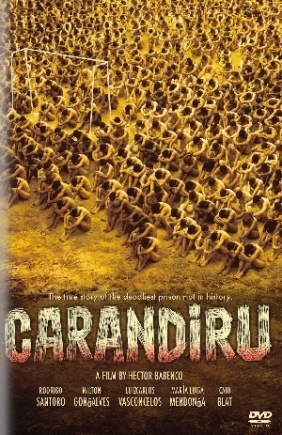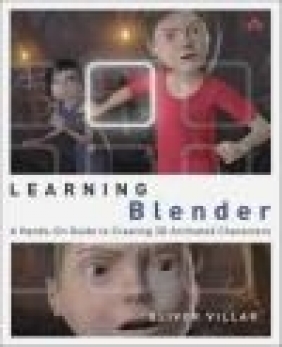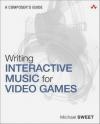Writing Interactive Music for Video Games
Michael Sweet
Writing Interactive Music for Video Games
Michael Sweet
- Producent: Addison Wesley Publishing Company
- Rok produkcji: 2014
- ISBN: 9780321961587
- Ilość stron: 512
- Oprawa: Miękka
Niedostępna
Opis: Writing Interactive Music for Video Games - Michael Sweet
"This book is a must read for newcomers and experienced composers wanting to learn more about the art of video game composition." -Chuck Doud, Director of Music, Sony Computer Entertainment Worldwide Studios All You Need to Know to Create Great Video Game Music Written by the developer of Berklee School of Music's pioneering game scoring program, this guide covers everything professional composers and music students need to know about composing interactive music for video games, and contains exclusive tools for interactive scoring-tools that were previously available only at Berklee. Drawing on twenty years of professional experience in the game industry, Michael Sweet helps you master the unique language of music storytelling in games. Next, he walks you through the entire music composition process, from initial conceptualization and creative direction through implementation. Inside, you'll find dozens of examples that illustrate adaptive compositional techniques, from small downloadable games to multimillion dollar console titles. In addition, this guide covers the business side of video game composition, sharing crucial advice about contracts, pricing, sales, and marketing. Coverage includes * Overcoming the unique challenges of writing for games* Composing music that can adapt in real time to player actions* Developing thematic ideas* Using audio middleware to create advanced interactive scores* Working effectively with game development teams* Understanding the life of a video game composer* Managing contracts, rights, estimating, and negotiation* Finding work The companion website contains software tools to help you master interactive music concepts explored in this book, with additional resources and links to learn more about scoring for games. See Appendix A for details. "Behind every great game experience is an interactive score that defines the emotional through-line of a game. Writing Interactive Music for Video Games will show you how to create such a score, from basic concepts to sophisticated techniques. It is filled with advice from some of the greatest video game composers working today, and written with the clarity and insight that comes from experience." -Tracy Fullerton, Director, USC Game Innovation Lab "Michael Sweet's book provides a much-needed text that walks a composer through all of the critical considerations when first starting to work in the video game industry. Not simply a 'how-to' but a 'why-to' that dives deep into the aesthetics and best practices of writing an interactive score. Through his years of work in the industry and years of teaching, he is able to bring together a comprehensive discussion on composing interactive scores. Professor Sweet brings together the nuts and bolts, the business, and pertinent historical moments-all while setting composers' expectations for working in the industry. There is no better book to be found if you are a composer looking to understand writing for games." -Jeanine Cowen, Vice President for Curriculum and Program Innovation, Academic Affairs, Berklee College of Music "Michael Sweet demonstrates a formidable depth and breadth of knowledge related to adaptive music. He adroitly covers both the creative and technical components critical to being successful in this field. This book is a must-read for newcomers and experienced composers wanting to learn more about the art of video game composition." -Chuck Doud, Director of Music, Sony Computer Entertainment Worldwide Studios "Clear, complete, concise, and filled with vital information. This is a must-read for any composer serious about scoring for games. If you want to know what makes game music unique, look no further; this book will take you to the next level!" -Steve Horowitz, Composer "The processes and techniques for composing for games has typically been a black art of strange terms and byzantine processes. Writing Interactive Music for Video Games uncovers the issues you have to deal with when composing music for games and presents them in an easy-to-understand way, from the creative and technical issues to making bids and dealing with contracts. An excellent resource for both the professional and aspiring composer, this book should be on the shelf of anyone interested in writing music for games." -Brian Schmidt, Executive Director, GameSoundCon, and President, Game Audio Network Guild "Michael Sweet has written a thorough and comprehensive guide for any composer or audio professional wishing to understand the technical and creative aspects of scoring video games. Students and professionals at all levels will find this book valuable and well worth reading." -Garry Schyman, Composer, Bioshock series, Middle-earth: Shadow of Mordor, Dante's Inferno, and Xcom: The Bureau Declassified; and Adjunct Professor, USC's SMPTV ProgramAbout This Book xxvii Acknowledgments xxix About the Author xxxi Introduction 1 Welcome 2 Structure of the Book 6 Conventions Used in This Book 11 Part I: Scoring for Games 13 Chapter 1: The Language of Music Storytelling in Games 15 What Makes a Video Game Unique? 16 Types of Music within Games 21 Exploring Music Function within Games 26 Synchronization and Integration of Music 28 Music Conceptualization 29 Analysis and Critique of a Game Score 32 Review 33 Exercises 34 Chapter 2: Breaking Down the Language of Interactive Music 35 What Is Interactive Music? 36 Types of Interactive Music 37 Control Inputs 42 The Composer's Toolbox 44 Review 50 Exercises 51 Chapter 3: Spotting the Game 53 The Game Production Process 54 The Spotting Process 55 The Goals of a Video Game Music Score 58 Video Game Scoring Techniques 62 Music Control Inputs 65 Repetition, Randomization, and Surprise 66 Review 67 Exercises 68 Chapter 4: Working with a Game Development Team 69 Who's in Charge? 70 Collaborating and Approving the Music 72 Preparing for Music Production 76 Review 81 Exercises 83 Chapter 5: Video Game Composition over the Past 40 Years 85 Why Video Game History Is Important 86 The Dawn of Coin-Operated Machines 87 The Ascent of the Arcade Machine 89 The Game Console Revolution 93 The Evolution of PC Gaming 97 The Rise of Handheld and Network Games 100 The Advancement of Audio Middleware 102 The Evolution of the Modern Gaming Platform 105 Review 107 Exercises 108 Chapter 6: Historical Perspective of Experimental Music 109 The Beginning of Interactive Music 110 Pre-Twentieth Century 110 1900-1950 112 Post-1950s 115 Review 120 Exercises 121 Part II: Fundamental Video Game Scoring Techniques 123 Chapter 7: Composing and Editing Music Loops 125 The Art of Looping Music 126 Musical Construction, Connections, and Cadences 128 Audio Editing 131 Auditioning Your Finished Loops 139 Review 140 Exercises 141 Chapter 8: Horizontal Resequencing 143 Sequencing Music in Real Time 144 Crossfading Scores 145 Transitional Scores 147 Branching Scores 149 Composing for Horizontal Resequencing 151 Review 152 Exercises 153 Chapter 9: Vertical Remixing 155 Remixing Music for Intensity 156 Deciding How Many Layers to Use 158 Types of Vertical Remixing 159 The Art of Fading Layers In and Out 160 Nonsynchronization of Layers 162 Composing for Vertical Remixing 163 Review 164 Exercises 164 Chapter 10: Writing Transitions and Stingers 165 Enhancing without Interrupting 166 Connecting Two Pieces of Music 166 The Concept of Musical Interruption 167 Composing Transitions 168 Transition Construction and Considerations 169 Example Transitions 171 Using and Placing Stingers 172 Review 173 Exercises 174 Chapter 11: Using Sound Design Techniques in Music 175 What Is Sound Design? 176 Basic Synthesis 177 Audio Signal Processing 182 Techniques for Creating Sound Design 183 Review 185 Exercises 185 Chapter 12: Music as a Gameplay Element 187 Engaging Players with Music 188 Music Games 188 Level Design, Construction, and Adaptation 194 Instruments in Interfaces and the Game World 195 Diegetic Music in Video Games 195 Music Approaches in Other Games 196 Review 196 Exercises 197 Part III: Advanced Video Game Scoring Techniques 199 Chapter 13: MIDI and Virtual Instruments 201 An Alternative to Prerendered Audio 202 Working with MIDI-Based Scores 204 Using Virtual Instruments 206 Review 209 Exercises 209 Chapter 14: Real-Time Tempo Variation and Synchronization 211 Immersing the Player through Tempo 212 Varying Tempo Based on Game Events 212 Tempo Changes with Prerendered Audio 213 Tempo Changes with MIDI or MOD 215 Tempo Synchronization 216 Phrase Synchronization 216 Review 217 Exercises 218 Chapter 15: Advanced Dynamic Music Manipulation Techniques 219 Weighing More Expensive Options 220 Melodic Manipulation and Reinterpretation 221 Ensemble, Rhythmic, and Style Alteration 221 Embellishment and Fills 222 Motivic Elements in a Running Score 223 Dynamic Reharmonization and Chord Mapping 224 Building an Event-Driven Sequencer 225 Review 226 Exercises 227 Chapter 16: Aleatoric Performance Techniques for Video Games 229 What Is Aleatoric Composition? 230 Aleatoric Techniques 231 Review 234 Exercises 235 Chapter 17: Algorithmic and Generative Music Systems 237 Using Algorithmic and Generative Music 238 Generating Music 239 The Rules of Game Composition 240 Mapping Control Inputs to Music 243 Applying Algorithmic Composition 243 Review 244 Exercises 245 Chapter 18: Using Middleware to Create Advanced Compositions 247 Simplifying Composition with Middleware 248 Using Multiple Interactive Techniques 251 Creating Scores Using a Middleware Engine 251 Intelligent Music Engines 252 Looping within a Middleware Engine 254 Variation and Randomization 255 Review 256 Exercises 257 Chapter 19: Creating a Custom Music Solution 259 Solving Problems with Custom Solutions 260 Limitations of Interactive Techniques 261 Teaching a Computer the Rules of Music 262 Selling the Idea to the Developer 262 Shaping an Interactive Musical Engine 263 Review 265 Exercises 266 Part IV: Bringing Music into the Game 267 Chapter 20: Composing Music with a Digital Audio Workstation 269 Getting Started with a DAW 270 Sequencer Setup and Track Layout 273 Planning for an Interactive Score 276 Transitioning between the DAW and the Game 279 Review 280 Exercises 281 Chapter 21: Live Recording, Session Preparation, and Mixing 283 Elevating the Score with Live Musicians 284 Preparing, Orchestrating, and Arranging 284 Session Preparation and Planning 286 Exporting a Sequence to Another DAW 290 Session Flow and Practices 291 Time Management 292 Final Mixing and Editing 292 Musicians and Recording 293 Review 297 Exercises 298 Chapter 22: Mixing and Exporting Audio Files to the Game Engine 299 Considerations for Mixing Music for Games 300 Bouncing and Exporting Master Files 301 File Formats and Compression 302 Surround Mixing within Games 305 Review 307 Exercises 307 Chapter 23: Implementation and Programming 309 Defining the Music Framework 310 The Implementation Process 311 Game Production Methodology 312 Balancing Compression with Quality 315 Allocating Time for Programming 318 Mixing and Real-Time DSP 320 Review 321 Exercises 322 Chapter 24: Large-Scale Music Development 323 Establishing a Unique Creative Direction 324 Unification and Planning 325 Organization, Revisions, and Backups 326 Mapping the Overarching Emotional Arc 328 Integration and Follow-Through 328 Large-Scale Interactive Music Challenges 329 Review 331 Exercises 332 Part V: The Business of Scoring Music for Video Games 333 Chapter 25: The Life of a Video Game Composer 335 A Day in the Life of a Game Composer 336 The Business of Scoring Games 337 Working In-House versus Out-of-House 340 Skill Sets 344 Music Production Companies 346 Internships as Entry Points 346 Music Libraries 348 Review 349 Exercises 350 Chapter 26: Contracts, Rights, and Work for Hire 351 The Legal Side of Composing 352 Non-disclosure Agreements 352 Music Rights and Work for Hire 354 The Project Contract 356 The Employment Contract 359 Demos 360 When Things Go Wrong 360 Federal Forms 361 Review 363 Exercises 364 Chapter 27: Creating an Estimate 365 Proposing Your Talents and Fees 366 Questions for the Developer 366 Using an Estimate as a Sales Pitch 368 The Psychology of Bidding 369 The Organization of an Estimate 370 Breaking Music Down into Components 372 Determining How Much Music to Write 374 Knowing How Much to Charge 375 Review 377 Exercises 378 Chapter 28: Contract Negotiation Tactics 379 Working for Less Than You're Worth 380 Collaborating with Developers 381 Renegotiating the Estimate 382 Royalty Arrangements 383 Offering Discounts for Multiple Projects 385 Licensing 386 Additional Rights and Opportunities 386 Review 389 Exercises 389 Chapter 29: How Composers Find Work 391 Building Relationships 392 Networking 393 Informational Interview 395 Video Game Conferences 395 Working for Free 397 Game Developer Organizations 397 Your Website and Blog 398 Social Networking 399 Cover Sheets and Resumes 400 Partnerships 400 Representation and Salespeople 401 Advertising and Public Relations Agencies 402 Review 403 Exercises 404 Chapter 30: The Challenges of Working as a Composer 405 Setting Expectations and Goals 406 Traits for Success 407 Competition 414 Handling Rejection and Failure 415 Finances 416 Review 418 Exercises 419 Part VI: Conclusion and Appendixes 421 Conclusion 423 Where to Go from Here 424 The Future of Game Scoring 424 Appendix A: Companion Website and Supporting Software Tools 425 Companion Website 426 Composer Tools 426 Appendix B: Glossary 427 Appendix C: Game Music Canon 437 1970 to 1989 438 1990 to 1999 438 2000 to 2009 439 2010 to 2013 440 Appendix D: Resources 441 Organizations 442 Game Conferences 442 Web Resources and Podcasts 442 Books 443 Audio Middleware 444 Game Engines and 3D Middleware 445 Appendix E: Composer Biographies 447 Index 453
Szczegóły: Writing Interactive Music for Video Games - Michael Sweet
Tytuł: Writing Interactive Music for Video Games
Autor: Michael Sweet
Producent: Addison Wesley Publishing Company
ISBN: 9780321961587
Rok produkcji: 2014
Ilość stron: 512
Oprawa: Miękka
Waga: 0.93 kg





























